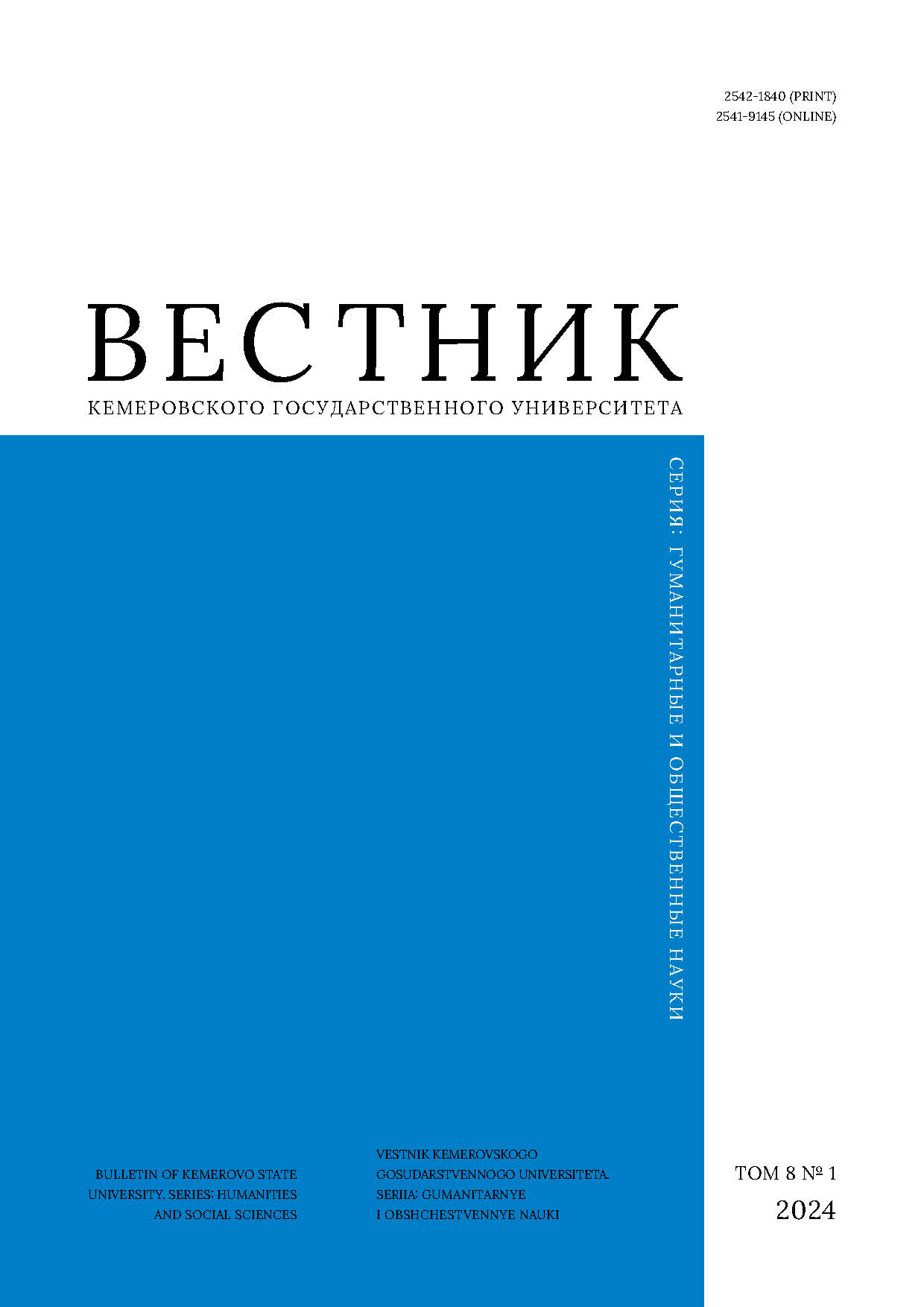Omsk, Russian Federation
Kemerovo, Russian Federation
Kemerovskiy gosudarstvennyy universitet (Acmeology and Developmental Psychology Department, associate professor)
from 01.01.2003 to 01.01.2023
Kemerovo, Russian Federation
Kemerovo, Russian Federation
The research featured the psychological and social factors of attention development in primary school children (10–11 y.o.), which also depends on such personal factors as mother-child relations and environment. The study involved 54 students of a comprehensive school in the city of Omsk, as well as their mothers. The Correction Test was used to measure the concentration, stability, and attentional set-shifting. The personal characteristics were studied using H. J. Eysenck's test of extraversion and neuroticism, as well as O. Yu. Grogoleva's questionnaire of motivation. The mothers were asked to fill in I. M. Markovskaya's Parent-Child Interaction Survey, as well as a questionnaire about their child's daily routine. The obtained data were processed using the Spearman correlation coefficient, the Fisher's criterion of angular transform, and the factor analysis. The attention span appeared to depend on both intrapersonal and socio-psychological factors. Emotional stability, extraversion, and academic motivation also affected children's attention. As for mother-child relations, mother's anxiety, satisfaction, and emotional closeness were the most important factors. Such environmental factors as the daily routine also contributed to the attention span.
attention span, primary school age, susceptibility, attentional set-shifting, concentration, child-mother relationship, properties of temperament, learning motivation, daily routine
1. Khomskaya E. D. Neuropsychology. 4th ed. St. Petersburg: Piter, 2005, 496. (In Russ.)
2. Diamond A. Executive functions. Annual Review of Psychology, 2013, 64(1): 135-168. https://doi.org/10.1146/annurev-psych-113011-143750
3. Galperin P. Ya. The problem of attention. Doklady APN RSFSR, 1958, (3): 33-38. (In Russ.)
4. Zimmermann P., Gondan M., Fimm B. KiTAP - Test of Attentional Performance for Children. Herzogenrath: Psytest, 2005, 79. URL: https://www.psytest.net/en/test-batteries/kitap/demo-version (accessed 14 Oct 2022).
5. Vuontela V., Carlson S., Troberg A.-M., Fontell T., Simola P., Saarinen S., Aronen E. T. Working memory, attention, inhibition, and their relation to adaptive functioning and behavioral / emotional symptoms in school-aged children. Child Psychiatry & Human Development, 2013, 44(1): 105-122. https://doi.org/10.1007/s10578-012-0313
6. Cohen R. A. Focused and sustained attention. The neuropsychology of attention. 2nd ed. N. Y.: Springer, 2014, 89-112. https://doi.org/10.1007/978-0-387-72639-7_6
7. Zomeren A. H. van, Brouwer W. H. Clinical neuropsychology of attention. 1st ed. N. Y.: Oxford University Press, 1994, 250.
8. Fan J., McCandliss B. D., Sommer T., Raz A., Posner M. I. Testing the efficiency and independence of attentional networks. Journal of Cognitive Neuroscience, 2002, 14(3): 340-347. https://doi.org/10.1162/089892902317361886
9. Huizinga M., Dolan C. V., Molen M. W. van der. Age-related change in executive function: developmental trends and a latent variable analysis. Neuropsychologia, 2006, 44(11): 2017-2036. https://doi.org/10.1016/j.neuropsychologia.2006.01.010
10. Konrad K., Neufang S., Thiel C. M., Specht K., Hanisch C., Fan J., Herpertz-Dahlmann B., Fink G. R. Development of attentional networks: an fMRI study with children and adults. NeuroImage, 2005, 28(2): 429-439. https://doi.org/10.1016/j.neuroimage.2005.06.065
11. Tremolada M., Taverna L., Bonichini S. Which factors influence attentional functions? Attention assessed by KiTAP in 105 6-to-10-year-old children. Behavioral Sciences, 2019, 9(1). https://doi.org/10.3390/bs9010007
12. Trautmann M., Zepf F. D. Attentional performance, age and scholastic achievement in healthy children. PLOS ONE, 2012, 7(3). https://doi.org/10.1371/journal.pone.0032279
13. Malegiannaki A.-C., Metallidou P. Development of attentional functions in school-age: evidence from both traditional and computerized tasks. Journal of Educational and Developmental Psychology, 2017, 7(1): 42-51. https://doi.org/10.5539/jedp.v7n1p42
14. Zevenbergen A. A., Ryan M. M. Gender differences in the relationship between attention problems and expressive language and emerging academic skills in preschool-aged children. Early Child Development and Care, 2010, 180(10): 1337-1348. https://doi.org/10.1080/03004430903059292
15. Pérez-Edgar K., LoBue V., Buss K. A., Field A. P., LAnTs Team. Study protocol: longitudinal attention and temperament study. Frontiers in Psychiatry, 2021, 12. https://doi.org/10.3389/fpsyt.2021.656958
16. Posner M. I., Rothbart M. K. Temperament and brain networks of attention. Philosophical Transactions of the Royal Society B: Biological Sciences, 2018, 373(1744). https://doi.org/10.1098/rstb.2017.0254
17. Charkova M. L. Motivation and attention development. Psikhologicheskaya nauka i obrazovanie, 2003, 8(2): 26-33. (In Russ.) EDN: HSRMKP
18. Dönmez M. U., İmamoğlu O. Comparison of attention levels in primary school students in terms of gender and physical activity. Asian Journal of Education and Training, 2020, 6(2): 256-260. https://doi.org/10.20448/journal.522.2020.62.256.260
19. Dilworth-Bart J. E., Khurshid A., Vandell D. L. Do maternal stress and home environment mediate the relation between early income-to-need and 54-months attentional abilities? Infant and Child Development, 2007, 16(5): 525-552. https://doi.org/10.1002/icd.528
20. Groot A. S., Sonneville L. M. J. de, Stins J. F., Boomsma D. I. Familial influences on sustained attention and inhibition in preschoolers. Journal of Child Psychology and Psychiatry, 2004, 45(2): 306-314. https://doi.org/10.1111/j.1469-7610.2004.00222.x
21. Belsky J., Fearon R. M. P., Bell B. Parenting, attention and externalizing problems: testing mediation longitudinally, repeatedly and reciprocally. Journal of Child Psychology and Psychiatry, 2007, 48(12): 1233-1242. https://doi.org/10.1111/j.1469-7610.2007.01807.x
22. Ruff H. A., Rothbart M. K. Attention in early development: themes and variations. N. Y.: Oxford University Press, 1996, 294.
23. Fearon R. M. P., Belsky J. Attachment and attention: protection in relation to gender and cumulative social-contextual adversity. Child Development, 2004, 75(6): 1677-1693. https://doi.org/10.1111/j.1467-8624.2004.00809.x
24. Hubbs-Tait L., Culp A. M., Culp R. E., Miller C. E. Relation of maternal cognitive stimulation, emotional support, and intrusive behavior during Head Start to children's kindergarten cognitive abilities. Child Development, 2002, 73(1): 110-131. https://doi.org/10.1111/1467-8624.00395
25. Razza R. A., Martin A., Brooks-Gunn J. Associations among family environment, sustained attention, and school readiness for low-income children. Developmental Psychology, 2010, 46(6): 1528-1542. https://doi.org/10.1037/a0020389




















